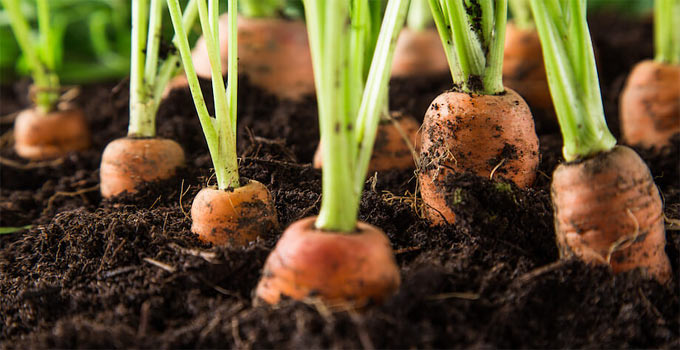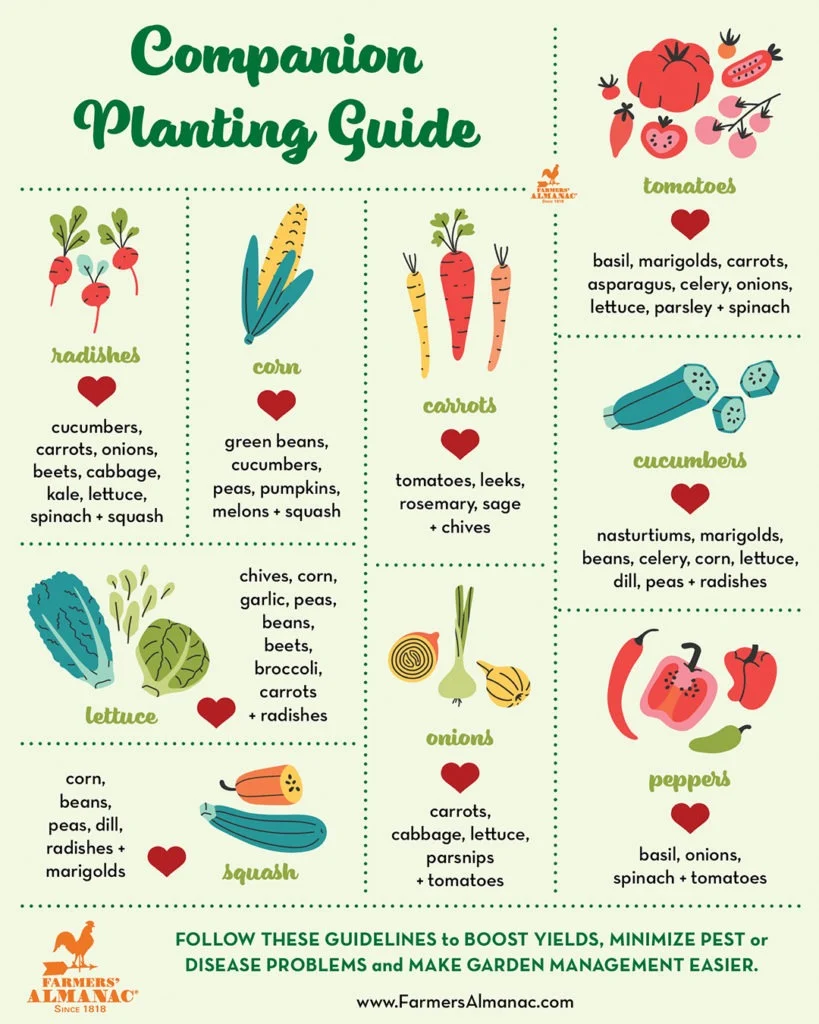Companion Planting Chart For Popular Vegetables

Did you know that some vegetable plants grow well with others, while not so good with other companions? Here are some examples of companion planting…
Burpee says, “It’s helpful to think of building good plant communities when planning your garden. This is the most important concept behind companion planting. Time-tested garden wisdom holds that certain plants grown close together become helpmates.”
– Some vegetable garden plants should NOT be planted next to each other.
– Other vegetables LOVE to grow next to each other…
Certain plants, when grown together, improve each other’s health and yields.
For instance, some plants attract beneficial insects that help to protect a companion, while other plants (particularly herbs) act as repellents.
Additionally, plants that require a lot of the same nutrients as their neighbors may struggle to get enough for themselves, producing lackluster crops.
– Farmers Almanac
There are numerous benefits to companion planting. Plants can attract beneficial insects and pollinators, deter pests, and act as insect repellents. Plants also play a role in soil fertility by improving the nutrient supply, availability, and uptake from the soil.
Tip: Flowers, especially Marigolds are as good as gold when grown with just about any garden plant. They will naturally control pests and attract beneficial pollinator insects, which will increase the fruit-set.
Tip: Separate foes and friends on opposite sides of the garden, or at least 4 feet away.
Companion Planting Chart
| CROP NAME | FRIENDS | FOES |
|---|---|---|
| BEANS | Beets Broccoli Cabbage Carrots Cauliflower Celery Corn Cucumbers Eggplant Peas Potatoes Radishes Squash Strawberries Summer savory Tomatoes | Garlic Onions Peppers Sunflowers |
| CABBAGE | Beans Celery Cucumbers Dill Kale Lettuce Onions Potatoes Sage Spinach Thyme | Broccoli Cauliflower Strawberries Tomatoes |
| CARROTS | Beans Lettuce Onions Peas Radishes Rosemary Sage Tomatoes | Anise Dill Parsley |
| CORN | Beans Cucumbers Lettuce Melons Peas Potatoes Squash Sunflowers | Tomatoes |
| CUCUMBERS | Beans Cabbage Cauliflower Corn Lettuce Peas Radishes Sunflowers | Aromatic herbs Melons Potatoes |
| LETTUCE | Asparagus Beets Brussels sprouts Cabbage Carrots Corn Cucumbers Eggplant Onions Peas Potatoes Radishes Spinach Strawberries Sunflowers Tomatoes | Broccoli |
| ONIONS | Beets Broccoli Cabbage Carrots Lettuce Peppers Potatoes Spinach Tomatoes | Beans Peas Sage |
| PEPPERS | Basil Coriander Onions Spinach Tomatoes | Beans Kohlrabi |
| RADISHES | Basil Coriander Onions Spinach Tomatoes | Kohlrabi |
| TOMATOES | Asparagus Basil Beans Borage Carrots Celery Dill Lettuce Melons Onions Parsley Peppers Radishes Spinach Thyme | Broccoli Brussels sprouts Cabbage Cauliflower Corn Kale Potatoes |
Chart source: Farmers Almanac
The Most Popular Companion Planting Guide:

Carrots Love Tomatoes: Secrets of Companion Gardening
(view on amzn)
Here’s another companion planting guide – from Farmers Almanac:

Here’s another companion planting chart. This one is quite comprehensive. It’s set up for easy cross-referencing one plant with others. You’ll see…
It wouldn’t look right if I tried to post a picture of the chart (it would be too squished). So instead I’ll provide a PDF download link:
[ Read: Beneficial Companion Plants for Tomatoes ]
What has been your own companion planting experience?
Any other suggestions or tips?
